No products in the basket.
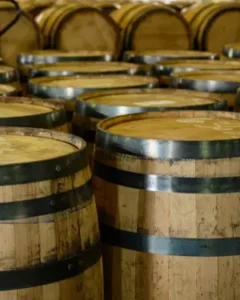
Many wine drinkers have a strong preference for either oaked wines or unoaked wines; people seem to love one and hate the other. It is important to differentiate between oaky wines with a strong taste of oak that appeal to a small proportion of wine drinkers and oaked wines. The latter have been fermented and / or aged in oak and may have no discernible wood on the palate or nose. Over-oaky wines like heavily-oaked Californian Chardonnay and commercial style Rioja, popular up till relatively recently, have not helped the reputation of oaked wines in general. So this guide looks at how wood affects wine, why and when oak is used in winemaking and how to tell oaked wines from unoaked wines. And, if wines matured in barrel are not your bag, there are also some tips on how to avoid them.
Oak can affect wine in a number of different ways. It can obviously affect the aroma and flavour of wine – but importantly, it does not have to affect the aroma and flavour. It can also have an impact on the colour, tannins and structure of wine and it can encourage clarification of the wine, with time.
Aromas & flavours from oak
Firstly though, let’s take a look at the aromas and flavours from oak that can be distinguished in wine. Vanilla is probably the flavour that first springs to mind and this comes from vanillin in the wood itself. Many of the other flavours come from toasting the barrel, a process used primarily to make the wood flexible enough to shape it but also to get rid of any bitter, green, raw wood flavours and to release other more palatable flavours. The stronger the degree of toasting, the more intense the flavours.
Lighter toasting shows spices like cloves and nutmeg with more intense toasting leading to flavours like dried fruit, dill, coconut, caramel, cocoa or chocolate, coffee, toast, smoke and even burnt wood (flavours like those depicted in the left hand side of the image below). This wide range is why wine aged in barrel is often described as having complexity.

The right hand side of the image depicts the fresh fruit aromas likely to dominate in a wine that has not been fermented or aged in barrel. Of course wine produced in a stainless steel vat can also be complex but the complexity comes from the grapes, the influence of the soils and the terroir in general and from the production processes such as maceration – where the grape juice is left on the skins – and lees ageing – where the wine rests on the dead yeast after fermentation.
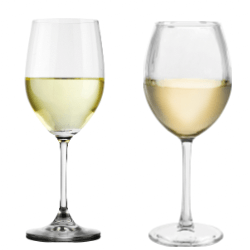 Colour from oak
Colour from oak
The longer white wines rest in oak, the darker they become. Chances are a deep yellow coloured white wine will have been fermented and / or aged in barrel although lees ageing can also make a white wine darker.
Ageing wine in oak stabilises the colour of red wine rather than changing it.
Tannins & oak
Tannins in wood can transfer into wine though mainly if new barrels are used and so winemakers have to monitor the affects carefully to avoid over-tannic wines. However, although oak is watertight – and wine-tight! – it does allow a tiny amount of oxygen to enter the wine and this slight oxidation helps to soften the tannins and make the wine rounder and smoother. It is these tannins and structure that give a wine the ability to age well. Tannins from oak can also assist in development of polyphenols, the many naturally-occurring compounds that affect the colour, taste and texture of the wine.
Body & texture from oak
In addition to the softening of wine in barrels through subtle oxidation, there is research to suggest that micro-organisms in the wood contribute to the smooth texture and elegance of the wine. Certainly it is known that American oak is relatively high in certain organic esters that give wine a creamy texture.
In brief, oak brings more complexity to wine. In an unoaked wine fresh fruit flavours dominate, the body is likely to be lighter, tannins will be low and the wine is unlikely to be particularly age-worthy. Most (well-made) oaked wines will have fresh fruits balanced with the flavours from the oak; tannins will give the wine structure but should not be too harsh or mouth-drying and the wine will have a fuller body and smooth mouthfeel.
Oak is widely used in wine making and it can enhance many wines – though not all. Care has to be taken not to overpower the wine’s natural flavours and aromas. In fact most wines will have spent some time in an oak cask but there are a large number of variables which mean that the influence of the oak ranges from high to practically zero and that the impact is on different aspects of the wine.
Choices for the winemaker about using oak barrels
Winemakers can influence the colour, aromas, flavours and texture of a wine if they choose to:
1) use oak as a fermentation vessel or not
The wines in my portfolio that I describe as unoaked have not been fermented or aged in oak just so that you can be sure of their complete unoaky provenance (some other retailers will describe wine fermented in oak but not aged in oak as unoaked). But don’t worry too much about wine fermented in oak – many wines are but the vessels are usually very large and very old so the effects on taste are very subtle, if noticeable at all. There are other advantages however to fermenting wine in oak, even if the oak vessels are large and old…
Large oak vats or casks are often used for fermentation as it is believed that oak flavours are better integrated at that stage in the wine-making process than later when the wine is ageing. Yeast is also part of the equation at the fermentation stage; the yeast coats the wood and so takes on some of the oak flavours which means that the oak effect on the wine’s flavours is reduced.
2) use oak barrels for ageing or not
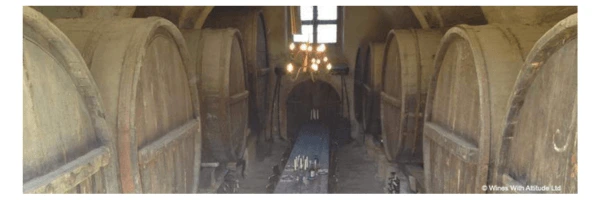
3) use large or small oak vessels
For ageing smaller barrels or barriques of 225 litres are considered optimum though ageing does also occur in huge casks. The rate of change in the wine is inversely proportional to the size of the vessel – so the smaller the barrel the more quickly a wine will develop or change. Usually 2 years is the maximum ageing period for smaller oak vessels; if the wine is aged for longer it tends to be in larger vessels.
For fermentation, the choice of barrel size dictates the fermentation temperature; the smaller the vessel, the more easily the heat from fermentation can be dispersed.
4) use European or American oak
Different types of oak have different properties and therefore different effects on wine. The two most widely used types are French and American though there are others.
American oak (quercus alba) is loose-grained and as it is more porous it imparts more flavours and stronger flavours like coconut, vanilla, butterscotch, cinnamon and dill but it can be astringent. It is also cheaper. The over-oaked Rioja wines with heavy sweet vanilla aromas that were, for a long time, a trend , they were invariably aged in American oak although many Rioja producers are now moving to French oak for a more elegant style. North & South America and Australia use American oak fairly widely too.
European oak (quercus robur) is sourced from France, Hungary, Romania, Russia, Poland and Slovenia and is fine to medium-grained; vanilla, clove, hazelnut, smokiness, all-spice and cedar are among its aromas. French oak from Limousin is generally considered the best oak for wine but of course it is the most expensive.
5) toast the barrels to different degrees
Oak barrels are seasoned before being used for wine, literally they are burned inside or toasted to different degrees so their flavours range from fresh to charred wood. The toasting effects fade over time.
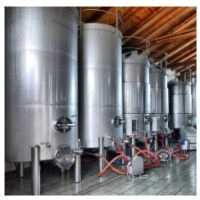
6) add oak chips into a stainless-steel tank
Yes, that’s right. adding wood chips into a stainless-steel tank happens. It is considered a shortcut and a cheaper method of course so is usually found at the low end of the market. Good tasters can detect or certainly suspect when chips have been used as the oak flavours are harsher and, since there has been no oxidation, they are not integrated with the other flavours in the wine.
7) use new or used oak
Obviously the newer the barrel, the stronger the oak flavours. Most new barrels are used three times before being considered neutral. Old barrels may still be used for the purposes of oxidation rather than for imparting oak flavours.
8) vary the amount of time the wine is in barrels
9) blend wine fermented in barrel with wine stored in stainless steel
10)… The list of options and combinations of options available to winemakers is endless.
Note also that other woods like acacia and chestnut can be used for barrels and these will affect the wines slightly differently. The complex and crisp wine, Caruso & Minini Naturalmente Bio Grillo for example is part fermented in acacia and the impact is very subtle.
Part of Sal da Terra Albariño is fermented in large chestnut barrels that have been shaped by boiling or steaming the wood and therefore the wood influence is low impact.
Unfortunately for those that prefer unoaked wines, there is often no easy way to tell if a wine has seen any oak. The first tip of course is to look on the label. A few wines do mention if they have been aged in oak e.g. “vieilli en fût de chêne” but to be honest, most wine labels just don’t give you that information.
The colour of a wine can be a clue especially for white wines which go deeper yellow due to the slight oxidation that occurs whilst the wine is in barrel. But bear in mind that deeper coloured white wine could also have seen some lees ageing. After fermentation, whether in oak or in stainless steel, wine can be left on the lees or dead yeast cells and this increases the complexity and colour and softens the texture of the wine. Wines that have been left on the lees can sometimes be mistaken for wines aged in oak.
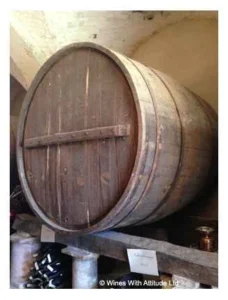 If you can smell wood on the wine, then you know for sure that the wine has seen some oak – in fact this might be when you use the term oaky wine (well-made wines influenced by oak are referred to as oaked, oak aged or oak matured). In fact if you can smell green wood then chances are that the wine is poorly made, possibly with the addition of wood chips to speed the process up and to contain costs. Oak should be used judiciously and its effects should be subtle. And the good news is that winemakers are generally moving away from heavy oak use.
If you can smell wood on the wine, then you know for sure that the wine has seen some oak – in fact this might be when you use the term oaky wine (well-made wines influenced by oak are referred to as oaked, oak aged or oak matured). In fact if you can smell green wood then chances are that the wine is poorly made, possibly with the addition of wood chips to speed the process up and to contain costs. Oak should be used judiciously and its effects should be subtle. And the good news is that winemakers are generally moving away from heavy oak use.
If the wine tastes very buttery, spicy or of vanilla then it is likely it will have seen oak. But remember other things like lees stirring can lead to the creaminess.
It seems to be becoming increasingly difficult to spot wines that have not seen the inside of a barrel. However few red wines have not seen any oak at all – this is why I make a point of having an unoaked red wine case so you don’t have to do the hard graft searching for them.
In red and white wines, a predominance of primary, fresh fruit flavours in the wine is a strong hint as is a lighter body but that is not to say that lighter, fruit-forward oaked wines are not possible especially because well-used barrels are used to add body rather than for imparting flavours and lees ageing can add body and texture to wine, as mentioned above.
Some grapes have a natural affinity with oak. That’s not to say that all these wines listed below are always aged in oak; many like Cabernet Sauvignon can be produced in different styles either as a fruit-forward unoaked style to an age-worthy spicy oak-matured wine. Chardonnay is fairly neutral and can show fruity characteristics if not oaked e.g. as in most Chablis but it can also be produced in a more creamy style like white Burgundy.
Grapes that like oak include Chardonnay, Semillon, Chenin Blanc, Viognier, Pinot Noir, Cabernet Sauvignon, Merlot, Syrah and Tempranillo – until recently Rioja’s quality system was based upon the length of time a wine is aged in oak.
For more fruit forward wines that are unlikely to have been oak aged try Pinot Grigio, most Rieslings, Soave or Sauvignon Blanc especially from the New World, Gamays from Beaujolais or Grenache. But the best bet would be to talk to your friendly wine merchant if you really want to avoid oak.
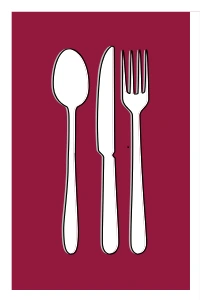
A quick word on matching barrel-aged wines with food…
Wines aged in oak are best served with heavier foods rather than something light like a salad or a delicately-flavoured fish dish.
Spicy dishes don’t match well as oak can clash with the spice.
And for unoaked wines, my only advice would be not to overpower the fruity flavours with food that is too strongly-flavoured.
It’s not always easy to find out if any oak has been used at all in the production of a wine and as we have seen above, a wine that has been fermented in an old and very large oak vat will not have any oak flavours as the oak stops influencing the contents after several uses. At Wines With Attitude therefore oaked wines tend to be wines that have been aged and / or fermented in oak and unoaked wines are wines that have been fermented and stored in stainless steel or concrete tanks before bottling.
Who’s to say if oaked wines or unoaked wines are better. It’s of course a matter of personal choice. The good news for all of us is that the trend today is towards less obviously oaked wines than in the past. Winemakers have generally upped their game and there are fewer examples of clunky, heavily oaked wines. A well-produced oaked wine can bring much joy, as indeed can an unoaked wine!
© 2014-2024 Wines with Attitude Ltd | VAT Reg. No. 181 2419 22 | Registered in England 08918466 | Fiveways, 57-59 Hatfield Road, Potters Bar, Herts, EN6 1HS